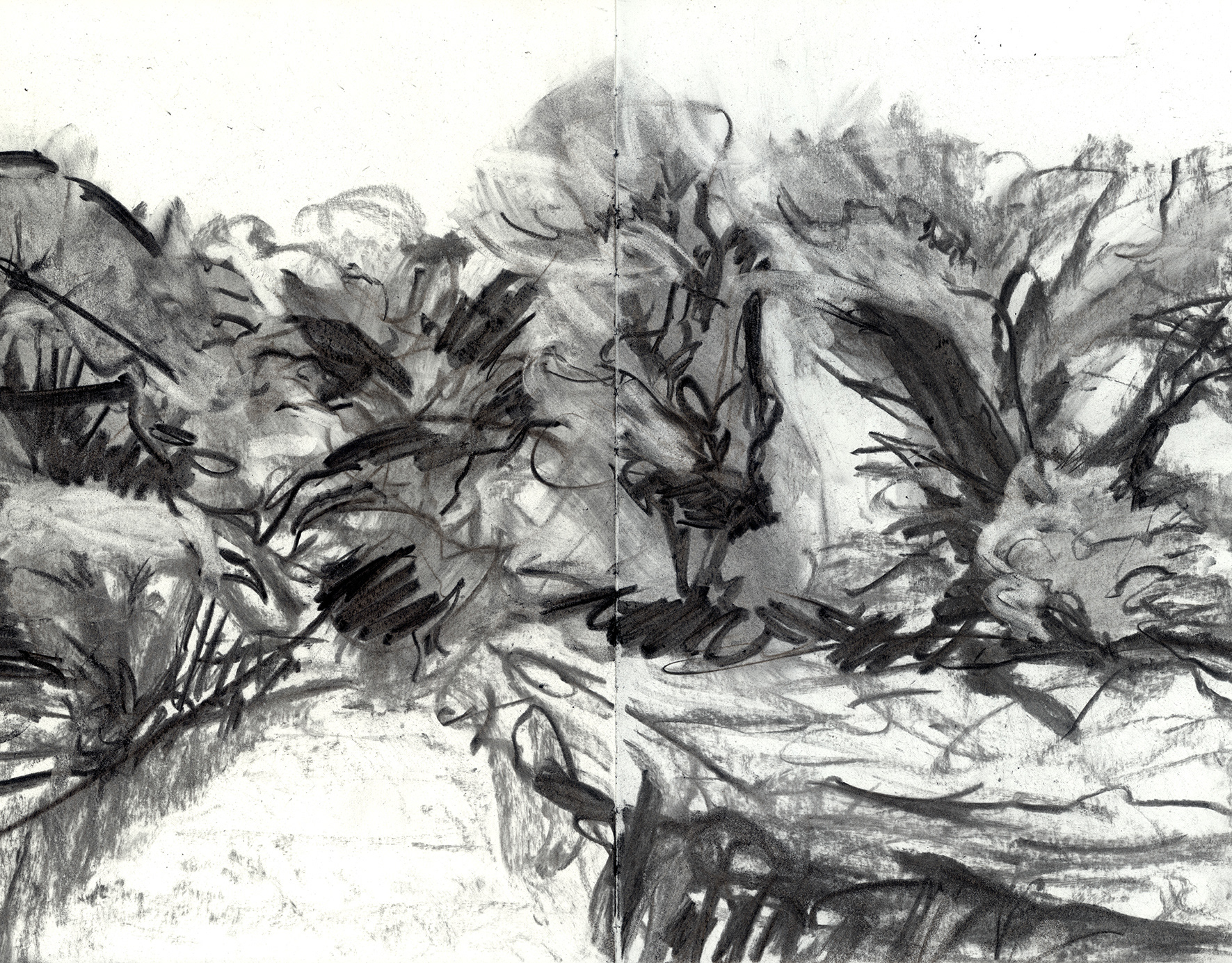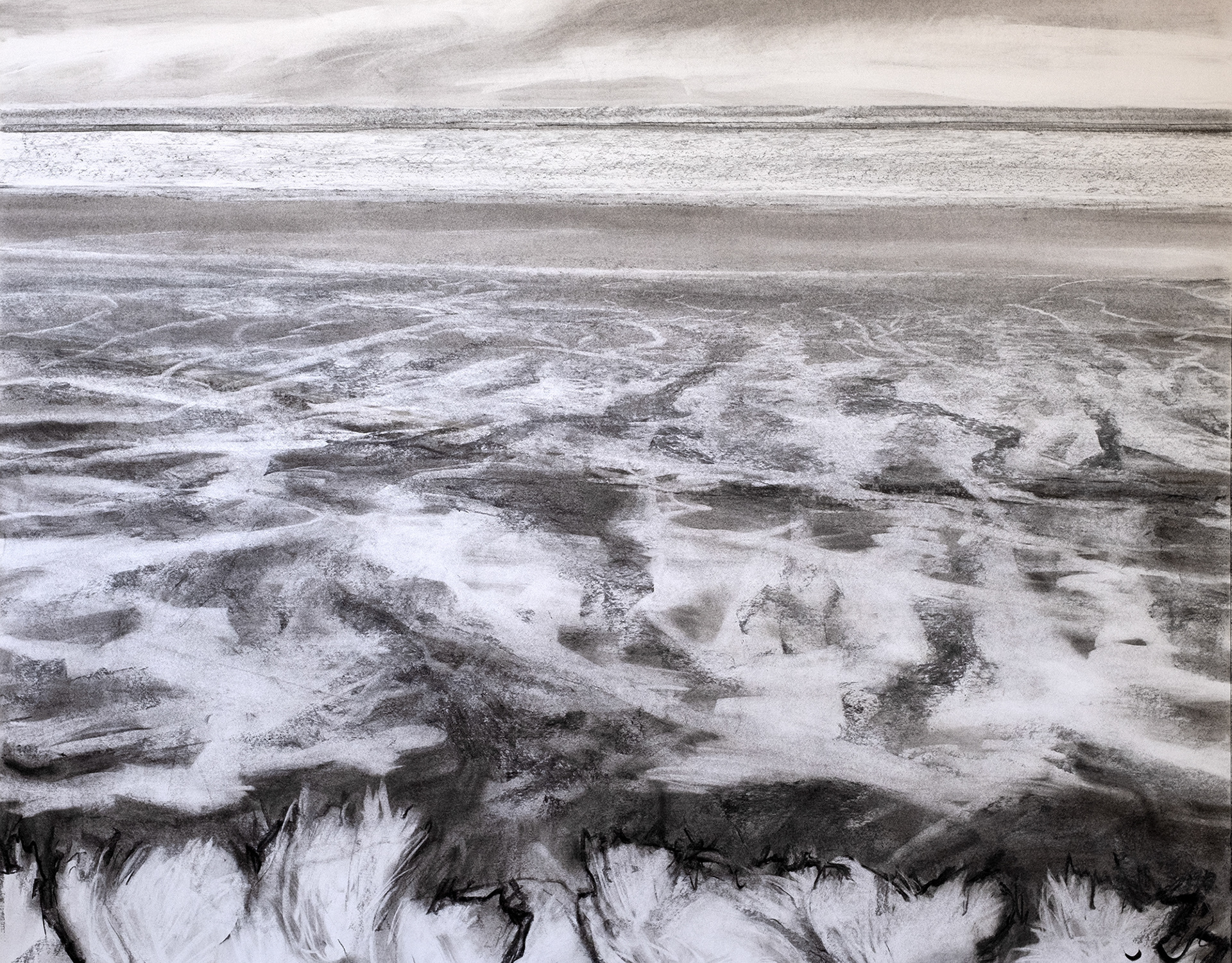Tree marking and field boundary
June 2023 (sketchbook drawing)
Encounters with landscape and nature in Suffolk
The works featured here are part of a personal exploration of the countryside and coast to the north and east of Ipswich, the town in Suffolk where I live.
Away from the tourist honeypots of Aldeburgh and Southwold, and the busy container port of Felixstowe, the Suffolk coast is celebrated for its wild beauty and for its wildlife value. It's a place I've often walked through, photographed and occasionally drawn or painted since I moved here. By contrast, the countryside inland is often unremarkable arable farmland and, away from the little towns and villages, more travelled through than visited. Until recently I was a traveller through this landscape too, until I decided to stop.
The works I've made since are often improvised on the spot, drawn or painted wherever access is possible, and I prefer to draw because it's a more direct method of working than painting. The works are a direct response to the locality and the pieces in sketchbooks are often as important to me as the larger more finished pieces. When I began this work I had no particular plan, only to draw whatever I found that interested me, working directly with traditional techniques within the broad traditions of Western landscape art.
However, while I didn't consciously start with a particular agenda, certain elements recur. In the arable farmland it's the usually deserted fields, the roads and tracks with their bordering hedges, and the trees, which are perhaps the area's most striking physical features. Someone mentioned to me that the drawings have an elusive, furtive quality, befitting the work of an imposter in a place of intensive mechanised arable farming, where nature is in retreat and access is not particularly encouraged.
On the Suffolk coast, a landscape already much-celebrated in art and music, it's the wide open spaces that get into my head, the feeling of limitless possibilities, and of freedom - if only one could grasp it.

